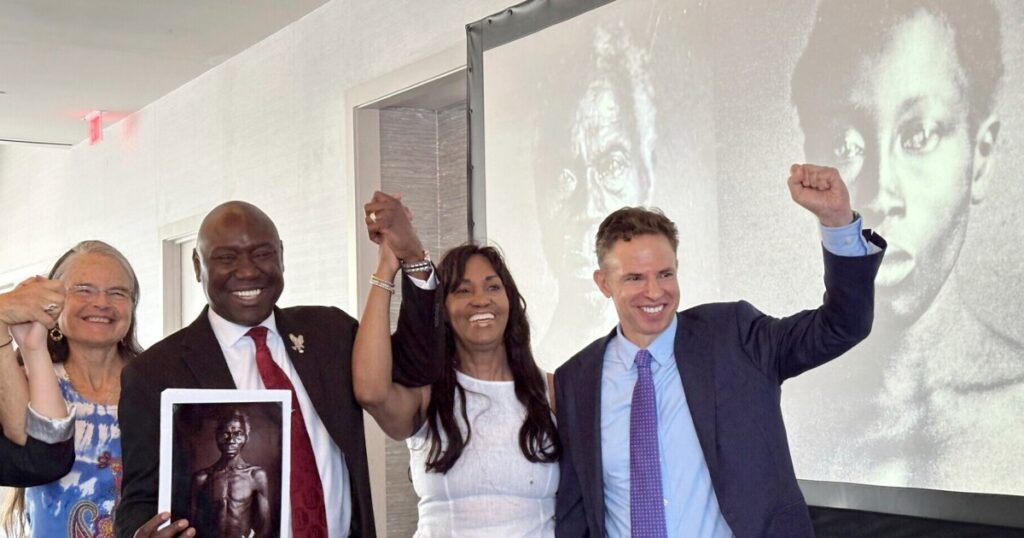Harvard Agrees to Transfer Historic Footage of Enslaved Ancestors to African American Museum
Historic Footage of Enslaved Individuals to Find New Home in South Carolina
Harvard University has announced its decision to transfer a collection of 19th-century photographs believed to be among the earliest images of enslaved Africans to the International African American Museum in Charleston, South Carolina. This move concludes a protracted 15-year legal battle initiated by Tamara Lanier, a descendant of the individuals depicted in the images, who claims the photographs portray her ancestors, Renty and his daughter Delia.
The photographs, taken in 1850 during a plantation visit, are daguerreotypes-an early form of photography predating modern film. Lanier’s legal team confirmed that the images will now be housed at the museum in Charleston, the very location where Renty and Delia endured slavery. The settlement signifies a historic step toward rectifying the legacy of exploitation associated with these images.
A Landmark Legal Victory for Descendants of Enslaved People
The resolution marks the culmination of a lengthy legal struggle, during which Lanier sought to reclaim her ancestors’ images and challenge their continued ownership by Harvard. Joshua Koskoff, Lanier’s attorney, described the outcome as an unprecedented victory for African American descendants, emphasizing the significance of recovering visual histories that date back nearly two centuries.
One of the central issues in the case was whether Harvard had the legal right to retain possession of the daguerreotypes, which depict individuals who could not have consented to their images being taken. The Massachusetts courts ultimately upheld Harvard’s ownership rights but acknowledged Lanier’s right to pursue damages for emotional harm caused by the university’s handling of the photographs.
Harvard stated that it has long been committed to transferring the images to a more appropriate context, ensuring broader access for the public and honoring their historical significance. The university’s negotiations with Lanier’s legal team resulted in an agreement to relinquish the photographs.
Historical Context and Ethical Considerations
During a recent event in Boston, Lanier stood beside a portrait of Renty, holding hands with Susanna Moore, the great-granddaughter of Louis Agassiz-a Harvard biologist who commissioned the photographs. Agassiz’s racial theories, which supported slavery and racial hierarchy, have been widely discredited but historically influenced scientific discourse.
Both women, representing contrasting legacies-one of enslavement and the other of exploitation-expressed their approval of the settlement. Lanier remarked, “This is a historic moment where the descendants of stolen ancestors can celebrate a victory for reparations. These images, taken without dignity or consent and used to promote racist pseudoscience, will now be returned to a place where their stories can be understood and their humanity restored.”
Moore acknowledged the deeply racist origins of the photographs, calling them “a profoundly racist project,” and emphasized the importance of changing how such artifacts are displayed in museums. “This victory reminds us that the way we handle these objects must evolve,” she said. “This woman, standing here today, has always known she was not insignificant, and she is not alone.”
Legal Foundations and Ongoing Debates
Lanier’s lawsuit, filed in 2019, accused Harvard of unlawfully exploiting her ancestors’ images, which were taken without their consent during Agassiz’s plantation visits. The photographs depict Renty and Delia posed shirtless, from multiple angles, as “study specimens” for scientific racial theories. Lanier argued that Harvard’s use of the images for profit and public display was exploitative and dehumanizing.
In 2021, a Massachusetts court ruled that the photographs belonged to the photographer, not the subjects or the institution, a decision later upheld by the state’s Supreme Judicial Court. However, the court also allowed Lanier to pursue damages for emotional distress, citing Harvard’s complicity in the unethical origins of the images.
Harvard expressed its desire to transfer the daguerreotypes to a museum or public institution, stating, “This settlement allows us to move forward with that goal.” Nonetheless, the university acknowledged the complex history surrounding the images and the importance of addressing past injustices.
A New Chapter for Renty and Delia’s Legacy
The International African American Museum’s CEO, Tonya M. Matthews, described Harvard’s decision as “a moment 175 years in the making.” She praised Lanier’s perseverance and the significance of returning these vital pieces of history to South Carolina, where the stories of Renty and Delia originated.
The museum has committed to collaborating with Lanier on how to interpret and present the photographs, ensuring that their stories are told with dignity and respect. Lanier’s legal action also sought acknowledgment of Harvard’s role in slavery and damages for the emotional toll inflicted by the photographs’ exploitation. While an undisclosed financial settlement was part of the agreement, Harvard has not publicly recognized Lanier’s familial connection or its historical complicity.
Koskoff emphasized that although Harvard has not publicly addressed its past, the settlement underscores the importance of confronting uncomfortable truths. “History is often written by the victors,” he noted, “but over time, the truth tends to surface, regardless of attempts to hide it.”
A Step Toward Justice and Reconciliation
This development represents a significant milestone in the ongoing effort to confront the legacy of slavery and racial injustice in the United States. The transfer of Renty and Delia’s images to a museum dedicated to African American history symbolizes a move toward acknowledgment, education, and healing.
As the museum prepares to display these photographs, the focus remains on honoring the dignity of those depicted and ensuring their stories are preserved for future generations. The case underscores the importance of ethical stewardship of historical artifacts and the power of descendants to reclaim their narratives.
Sources: The Associated Press

